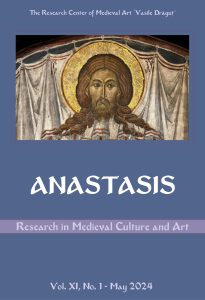L’église Saint-Georges de Mazraaet el-Chouf et son abside peinte. Un exemple de l’architecture religieuse chrétienne au Liban à l’époque ottomane
The Church of Saint George in Mazraaet el-Chouf and its Painted Apse: An Example of Christian Religious Architecture in Lebanon during the Ottoman Era
Author(s): Hany Kahwagi-Janho, Rita KalindjianSubject(s): Christian Theology and Religion, History, Fine Arts / Performing Arts, Architecture, History of Church(es), Theology and Religion, The Ottoman Empire
Published by: Editura ARTES
Keywords: Lebanon; church; ottoman; architecture; metrology; wall paintings;
Summary/Abstract: With the advent of the Ottoman Empire in the Levant region and particularly in Mount Lebanon, we witnessed a sort of unification of the Christian religious architecture in the region, particularly for the typology of single-naved churches. This unified model, apart from a few variants, is based on a plan most often with two bays and a supporting structure formed by pilasters supporting edge vaults. The Saint George Church of Mazraaet elChouf, dating from the 18th century, forms a typical example of this architecture. With its apse covered by a multitude of layers of painted coatings, it forms one of the rare examples in Lebanon where several specimens of wall paintings, characteristic of this period, overlap and are still preserved while, in dozens of similar churches, these coatings have completely disappeared following the stripping of the monuments’ walls.
Journal: Anastasis Research in Medieval Culture and Art
- Issue Year: XI/2024
- Issue No: 1
- Page Range: 28-54
- Page Count: 27
- Language: French

